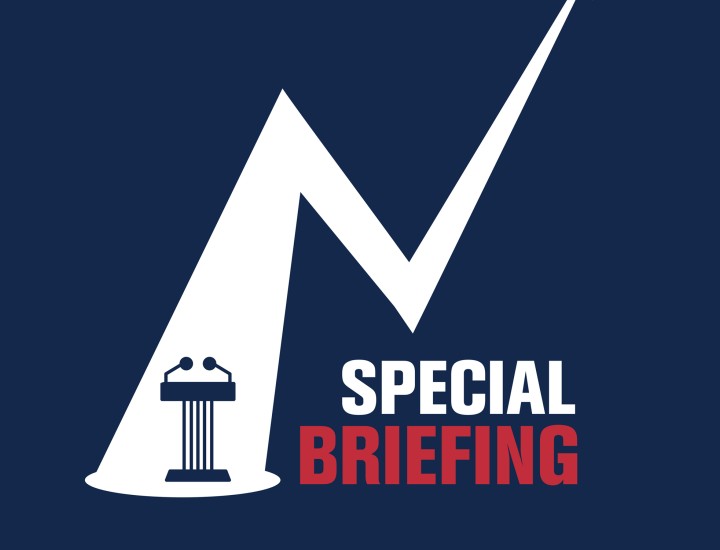How States Will Balance Budgets as Coronavirus Spreads Fiscal Stress

[This commentary by William Glasgall was originally published by University of Illinois Chicago's Government Finance Research Center.]
Enumerating the severe fiscal consequences for US states of the global COVID-19 pandemic is enough to make you want to crawl into a cave and stay there to avoid the barrage of bad news. Tax and fee revenues are collapsing—just as pandemic-related health costs are spiraling—as governments order people to stay home to limit the coronavirus’s spread. Travel and tourism, and the economic activity they generate, have become almost nonexistent. Schools, universities, and sports arenas and stadiums have been shuttered. And jobs are evaporating. “The fall in employment is apocalyptic,” writes Diane Swonk, chief economist at Grant Thornton LLP.
Amid expectations that US gross domestic product may plunge at as much as a 30 percent annual rate in the second quarter, Congress is shoveling out more than $2.2 trillion in aid to states and localities through the recently signed CARES Act and other programs. Additional federal aid bills probably will be enacted in coming months. But the emergency assistance may not cover emerging revenue shortfalls. Because states, by law or practice, cannot run deficits like the federal government, many governors are already freezing nonessential spending and proposing program cuts. Even with those steps, achieving balance will be difficult with revenue and expenditure estimates remaining moving targets.
In the short run, at least, the states, counties, and cities that account for 20 percent of GDP are likely to resort to one-time measures to stanch the bleeding. Since fiscal 2015, the Volcker Alliance has chronicled the ways states deploy such techniques annually, most recently in the report Truth and Integrity in State Budgeting: The Balancing Act, covering fiscal 2017-19. Among the five categories evaluated, the report grades states on their willingness to avoid covering recurring expenditures with one-time revenue sources, including borrowing or other budgetary maneuvers that push the cost of delivering today’s services to future years or generations.
It was easier to earn higher budget grades when revenue collections are strong, as was the case while the record-long economic recovery of 2009-20 was gaining momentum; the average Budget Maneuvers grade for all states in 2017-19 was B, with 19 earning a top A mark and only three—Illinois, New York, and Pennsylvania—receiving a D-minus, the lowest score. That record almost certainly will worsen as budgets are enacted in 2020, and while we urge states to return to achieving balance with more sustainable practices when the economy eventually pulls out of its nosedive, the next few years are sure to be full of maneuvers born of desperation.
Examples of likely one-time actions include:
Drawing down rainy day funds and other reserves. States received an average B grade for Reserve Funds in 2017-19, with eighteen winning an A. This reflects many states taking advantage of the recovery to salt away cash to help cushion the blow of disasters, such as the current pandemic.
California, for example, has $16 billion in its rainy day fund and $4 billion more in other liquid reserves. But even those amounts will cover only a tenth of proposed spending for 2021. Other states are less fortunate. With only $4 million on hand the Illinois rainy day fund could cover only a few minutes’ worth of proposed fiscal 2021-22 budget spending. While most states allow rainy day withdrawals for revenue shortfalls, only half have special provisions for health or safety emergencies, according to our recent working paper, Rainy Day Fund Strategies: A Call to Action, by Alliance special project consultants Katherine Barrett and Richard Greene.
Increasing borrowing. States and localities borrow hundreds of billions of dollars a year to fund such long-lived infrastructure items as roads, bridges, stadiums, and schools. But sometimes they borrow from banks or the $3.8 trillion municipal bond market to help cover revenue shortfalls, meaning taxpayers may still be paying the cost of current budget gaps until 2030 or even 2050. In 2017-19, fifteen states covered recurring expenditures with debt in at least one of the three years, according to Volcker Alliance Budget Report Cards.
That number will probably grow. In New York, where the fiscal year begins April 1, legislators passed a budget authorizing as much as $11 billion in additional borrowing for fiscal 2021, 18 percent above previously planned levels. Although some of the debt may cover short-term cash flow needs, the budget bill allows it to be converted to long-term obligations at the discretion of the governor’s budget director, observes E.J. McMahon, research director at the Empire Center for Public Policy. And while Illinois, meanwhile, has whittled its backlog of unpaid vendor bills to $7.9 billion in April from $16.7 billion in 2017, “further payment delays are to be expected in the coming weeks and months,” according to Comptroller Susana A. Mendoza. The past-due bills cost taxpayers interest of as much as 1 percent per month.
Shifting costs to counties and cities. Even with revenues growing nicely, many states did this in 2017-19 to balance budgets, and more such shifts are already occurring as tax collections flag. The 2021 New York budget, for one, reduces state aid to New York City by $560 million while also requiring additional city funds for the state-run Metropolitan Transportation Authority.
States have many other tools to manage budgetary stress. New Jersey, for one, plans to delay the start of its fiscal year to September 1 from July 1 to give budget officials a better handle on the revenue and spending outlook. While such flexibility is inevitable given the cost of fighting coronavirus, states should not lose sight of returning to more fiscally sustainable practices once the pandemic recedes and Americans get back to work.

